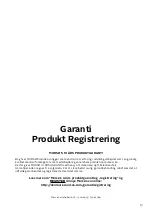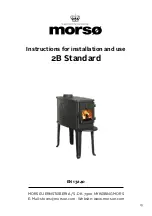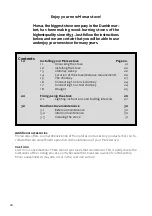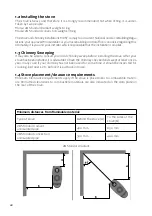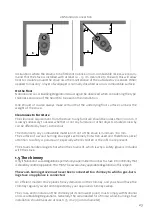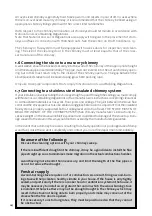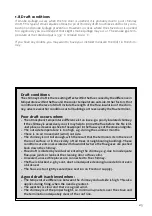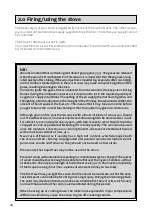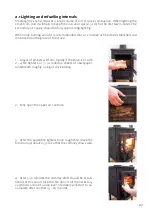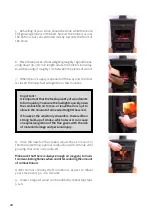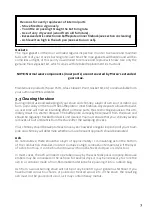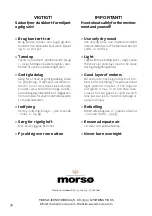
31
Reasons for overly rapid wear of internal parts
- Stove fired too vigorously.
- Too little air passing through the bottom grate.
- Use of very dry wood (wood from old furniture).
- Excessive debris collection on baffle plate or inner fireback (see section on cleaning)
- Ash level too high in the ash pan (see section on ash).
Gaskets
The rope gaskets in the door will need regular inspection in order to ensure and maintain
full control of your stove’s burning rate; over time the rope gaskets will harden and will be-
come less airtight, at this point you will need to remove and replace with new. Use only the
genuine Morsø gasket kit, which comes with detailed replacement instructions.
NOTE: Normal wear components (inner parts) are not covered by Morsø’s extended
guarantee.
Maintenance products (Spare Parts, Glass Cleaner, Paint, Gasket Kit, etc) are all available from
your authorised Morsø dealer.
3.3 Cleaning the stove
During normal use and sweeping of your stove and chimney, a layer of ash, soot or debris can
form, particularly on the top of the baffle plate or inner fireback. Any deposits allowed to build-
up over time will have an insulating effect on these parts, thus restricting expansion; this ulti-
mately result in a shorter lifespan. The baffle plate can easily be removed from the stove and
should be regularly checked for debris and cleaned. You must ensure that your chimney sweep
removes all soot and debris from the stove after the sweeping process.
Your chimney should be swept at least once a year; however a regular inspection of your stove-
pipe and chimney will determine whether a more frequent approach should be adopted.
Ash
As noted above, there should be a layer of approximately 1 cm insulating ash in the bottom
of the combustion chamber in order to achieve a high combustion temperature. If the layer
of ash is too thick, it can be brushed down with an ash shovel, dustpan or similar tool.
In most cases, the ash will need to be taken away by the waste disposal company. Because
embers may be concealed in the ash pan for several days, it may be necessary to store the
ash in a container made of non-flammable material before pouring it into a rubbish bag.
Ash from a wood-burning stove will not be of any benefit to your garden as fertiliser. If you
have burned colour brochures, or painted or treated wood, etc., in the stove, the resulting
ash must not be poured onto soil, as it may contain heavy metals.

